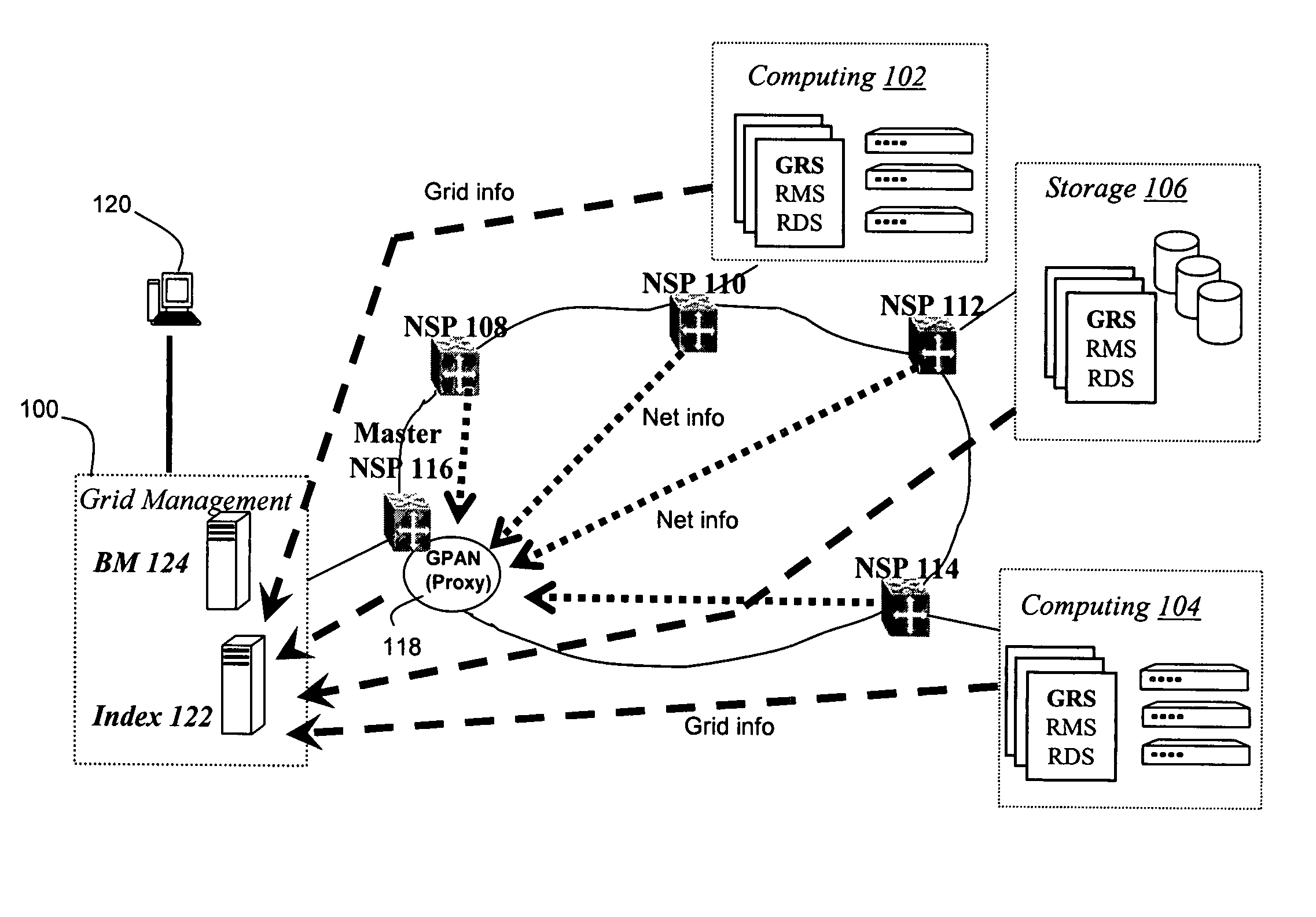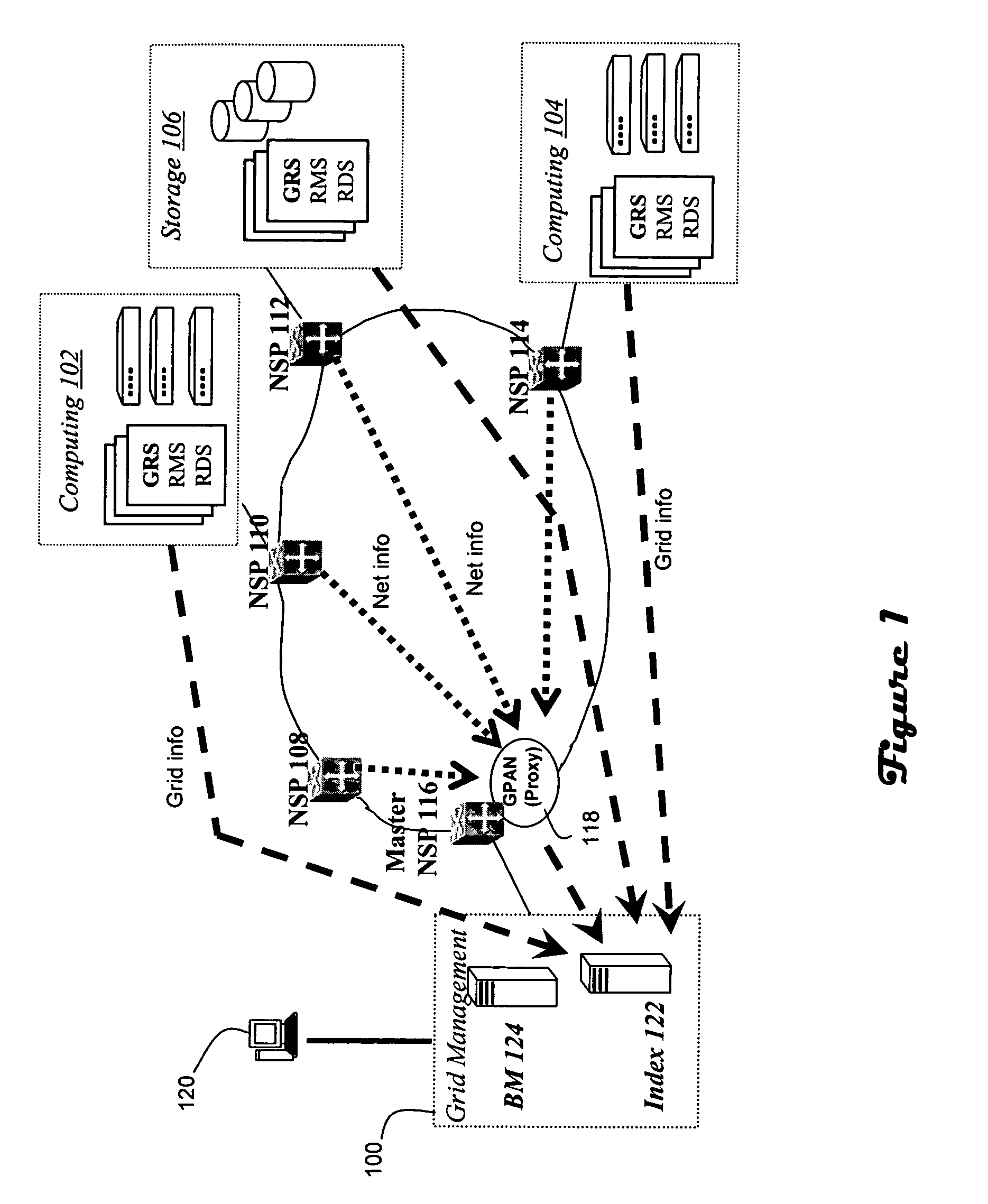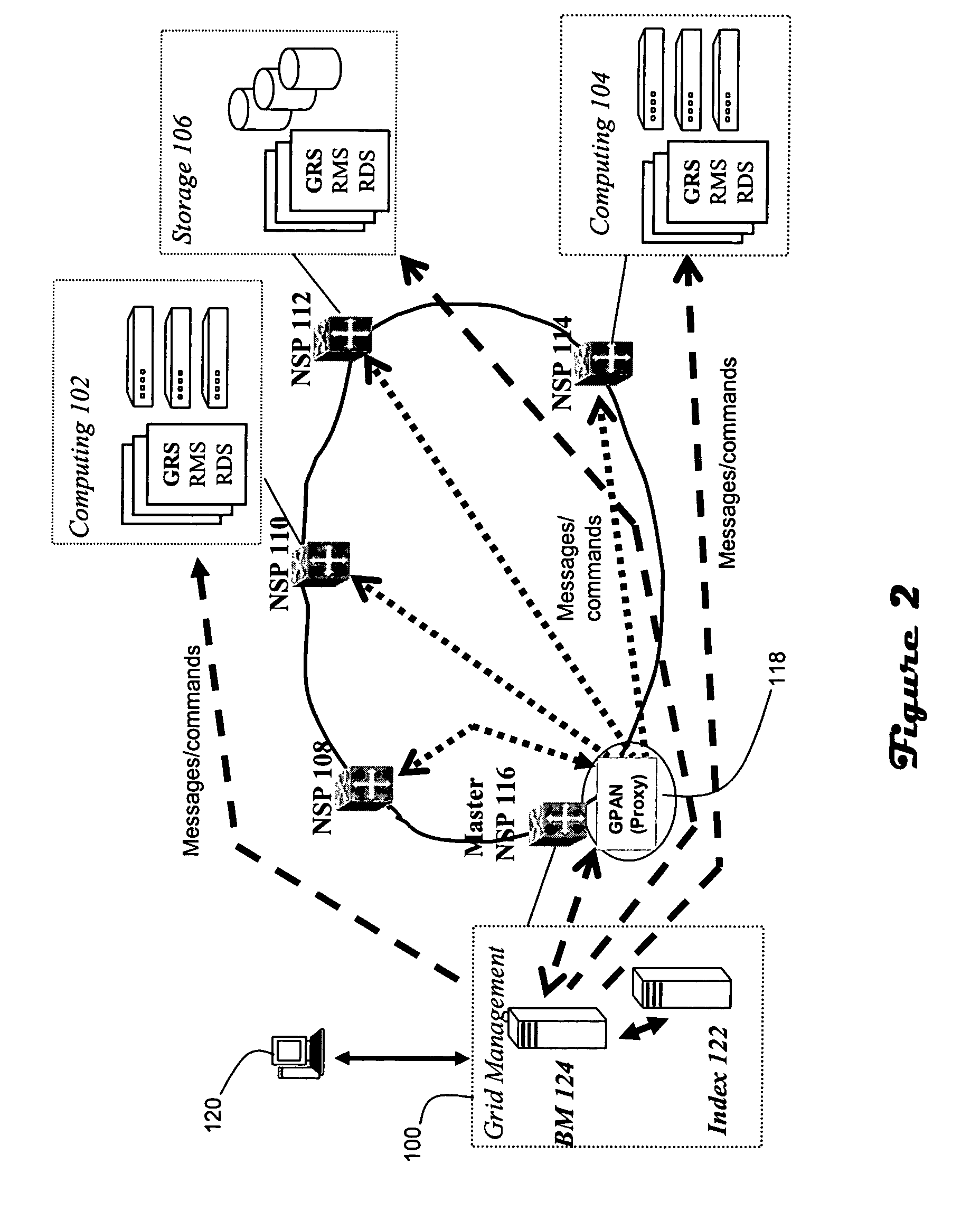Grid proxy architecture for network resources
a network resource and proxy technology, applied in the field of distributed computing, can solve the problems of inability to purposefully make its resource available on the network device, inability to support the requisite resource sharing of network nodes in traditional networks, and inability to be practicable on the network device such as routers and switches, so as to facilitate resource brokerage and reservation
- Summary
- Abstract
- Description
- Claims
- Application Information
AI Technical Summary
Benefits of technology
Problems solved by technology
Method used
Image
Examples
Embodiment Construction
[0019]Referring to FIG. 1, a grid computing network architecture includes multiple grid resources that are in communication via multiple communications network elements. The grid resources may include a grid resource manager 100, computing resource provider 102, 104 and storage resource provider 106. The grid manager, computing resource provider and storage resource provider execute Grid-based Resource Services (GRS) such as Resource Management Services (RMS) and Resource Data Services (RDS). The communications network elements include various switching and routing devices which make up network services peers (“NSPs”) 108-114, and a master network service peer 116 that implements a Grid Proxy Architecture for Network Resources (“GPAN”) 118 for the grid network. An application device 120 which originates a request for execution of an application on the grid communicates with the grid network through the grid manager 100.
[0020]The grid manager 100 manages grid-enabled resources shared...
PUM
 Login to View More
Login to View More Abstract
Description
Claims
Application Information
 Login to View More
Login to View More - R&D
- Intellectual Property
- Life Sciences
- Materials
- Tech Scout
- Unparalleled Data Quality
- Higher Quality Content
- 60% Fewer Hallucinations
Browse by: Latest US Patents, China's latest patents, Technical Efficacy Thesaurus, Application Domain, Technology Topic, Popular Technical Reports.
© 2025 PatSnap. All rights reserved.Legal|Privacy policy|Modern Slavery Act Transparency Statement|Sitemap|About US| Contact US: help@patsnap.com



